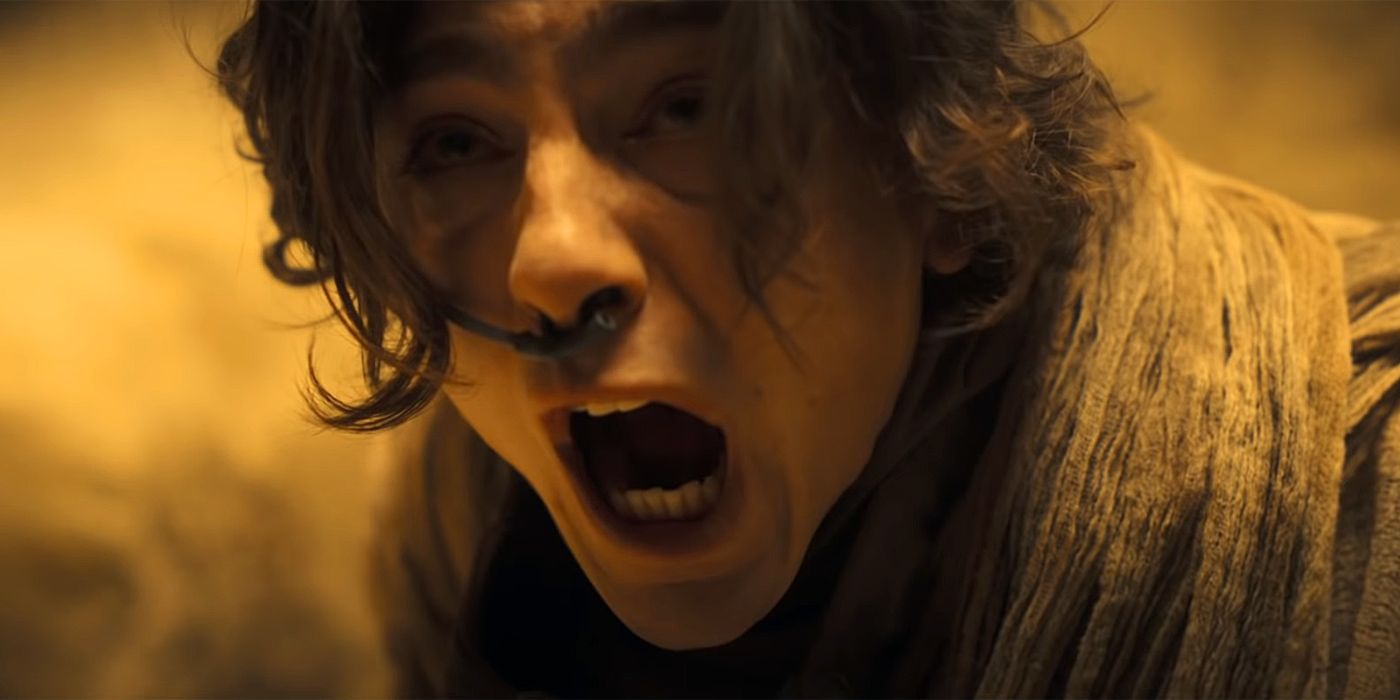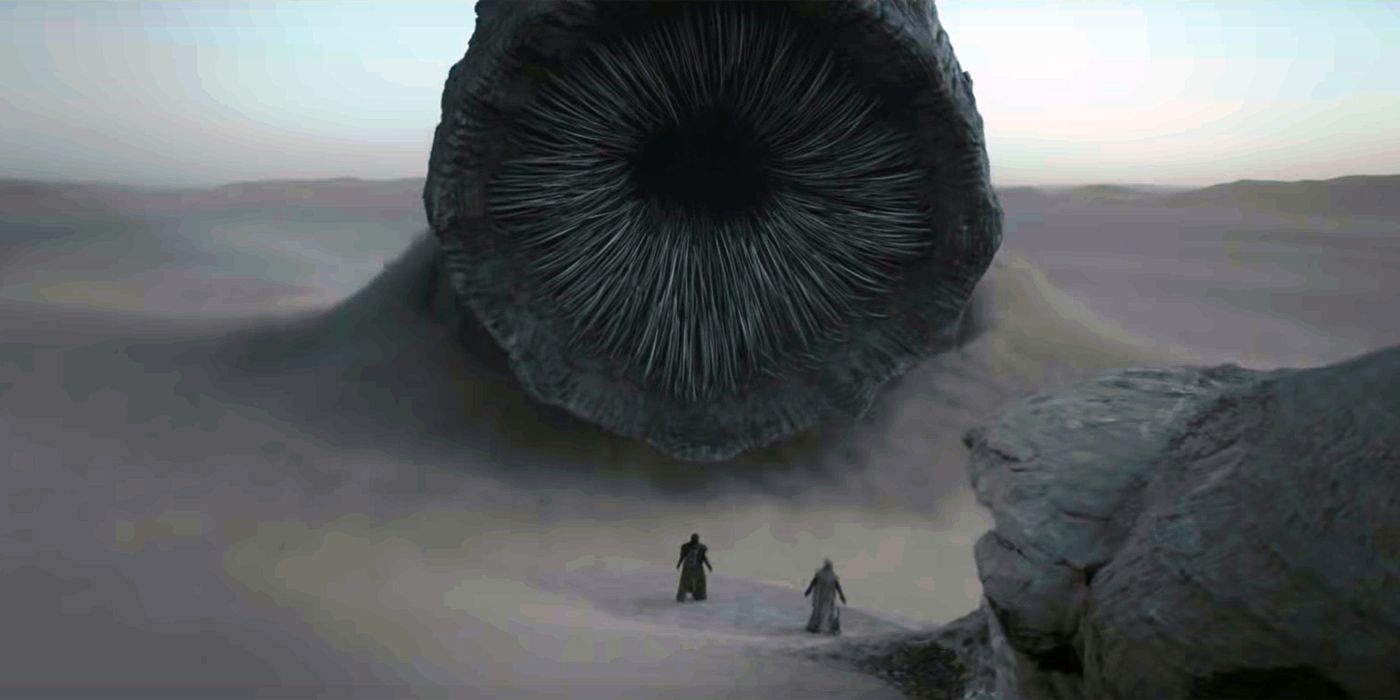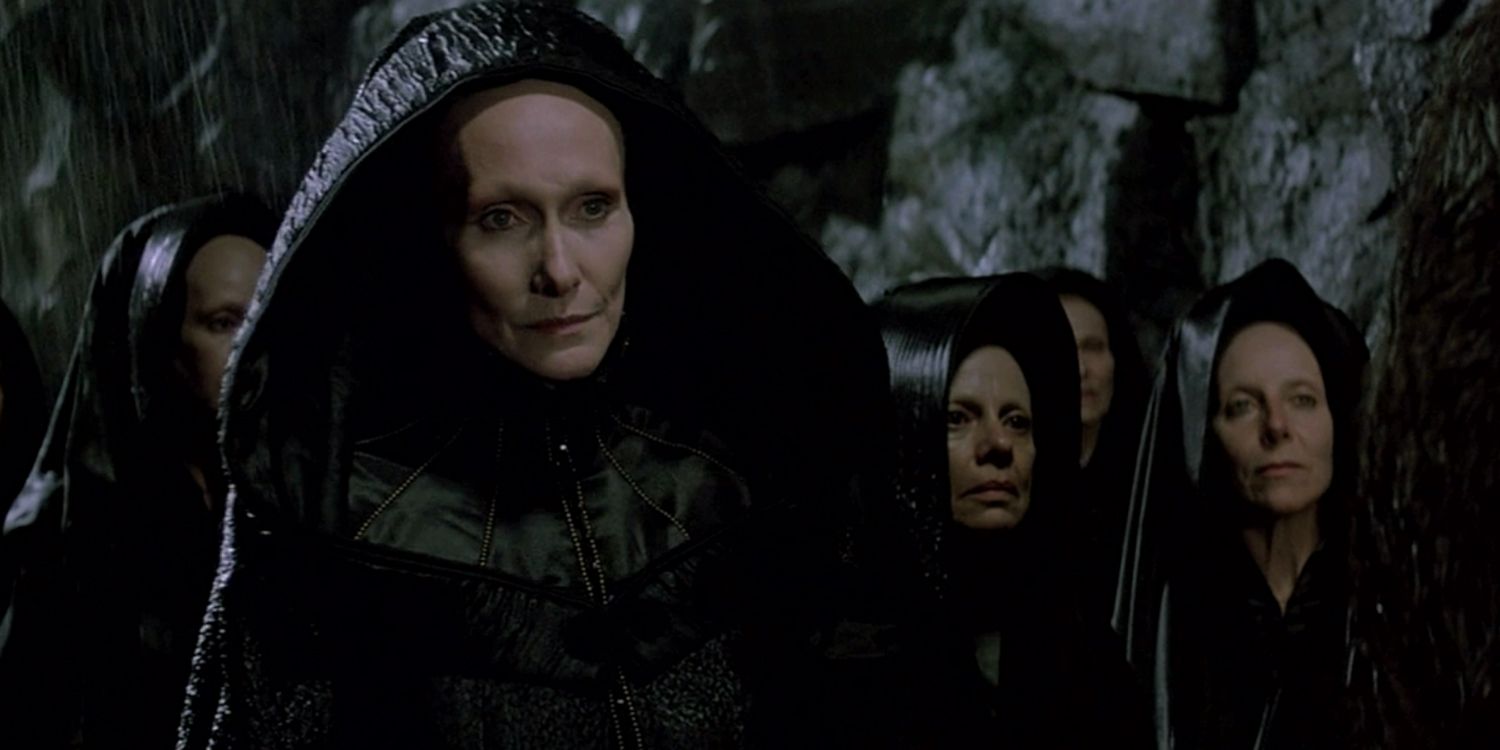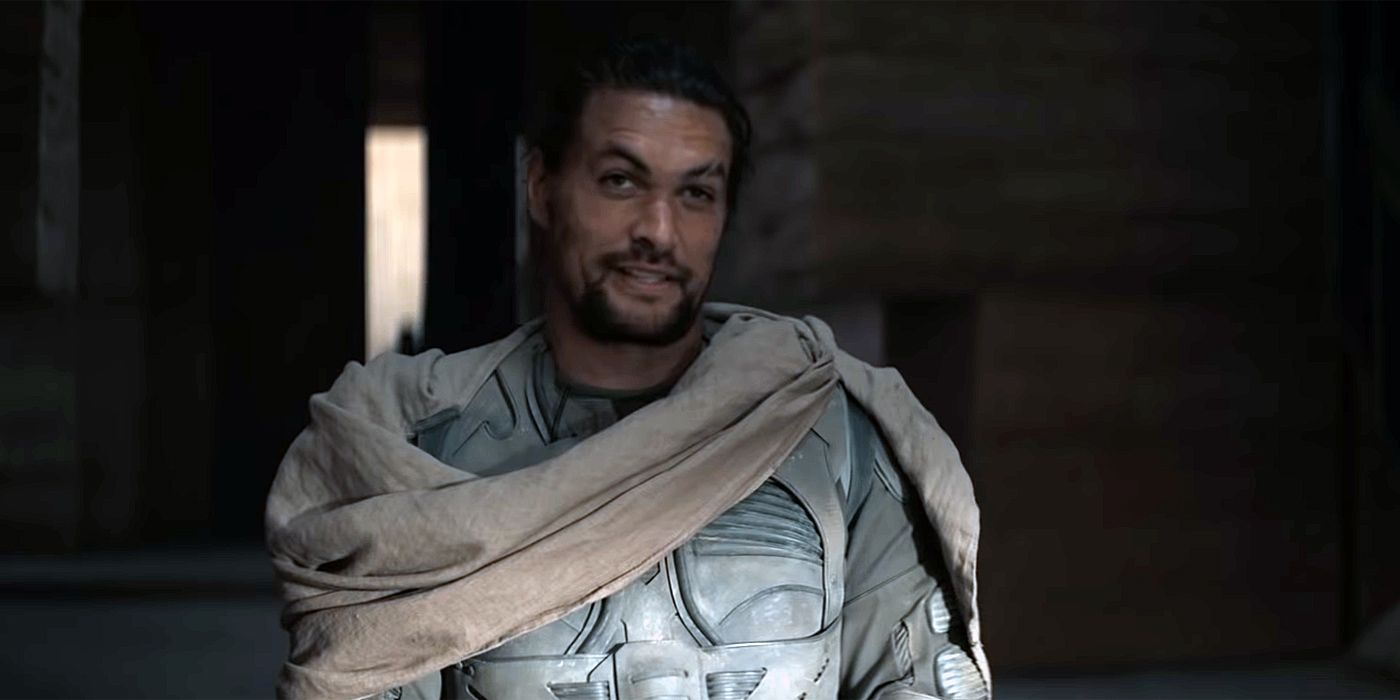WARNING: The following article contains spoilers for the Dune franchise.
The beloved first novel in the Dune series is being adapted into two films directed by Denis Villeneuve, with Part 1 set to premiere in October 2021. Villeneuve has ambitious goals for Dune. If he gets his way and the rest of the series is adapted, audiences should get ready for some major weirdness.
Dune has a well-earned reputation for being one of the trippier sci-fi series out there. The first book alone deals with some very heady ideas, but things only get wilder as the series progresses. Here are some of the wildest aspects of the subsequent five novels written by Frank Herbert.
The Story Spans Almost Five Thousand Years
The first Dune book is already set over 20,000 years into our future. Humanity has long left the Earth behind and to remain a cohesive civilization, they have reverted to a feudal government ruled by Emperor Shaddam IV. Paul Atreides, the hero of Dune, throws a monkey wrench into the plans of every major political player in the universe. It's an incredibly exciting tale and Paul makes for a truly charismatic and sympathetic protagonist.
But Herbert quickly tears down our heroic image of Paul (more on that below) and reveals the true scope for the story of Dune. Paul is merely the catalyst for a tale that is ultimately a cautionary exploration of the human will to survive and the systems of power that threaten to lead us astray, towards utter self-destruction. Herbert's five subsequent novels span over 4,500 years and follow the increasingly distant descendants of Paul Atreides as they continue to deal with the consequences of his actions.
Paul's Reign Is Horrific
Dune Messiah, the second novel in the series, has a somewhat infamous reputation and was not initially met with the same acclaim. Fans of the first book were shocked to find Paul's reign as Muad'Dib, messiah and emperor of the known universe, had some very ugly consequences. One of the prevailing themes often overlooked in the first Dune book is Paul's fear of his prescient dreams. He often dreamed visions of fanatic hordes, slaughtering and subjugating worlds across the stars in his name.
As Paul's ability to see the future became stronger, he realized that his powers were a prison. Simply by seeing the future, he locked humanity on that path. Messiah presented a depressed and beaten-down Paul twelve years into his reign. He might've defeated his enemies during Dune, but he was completely unable to avert the holy war waged in his name which burned thousands of worlds and billions of lives.
His every action was held down by the bureaucratic religion and government that sprouted around him or the conspirators who constantly sought his death. Paul spends the entirety of Messiah trying to escape his visions and destroy what has been created in his name. Paul ultimately manages to free himself from his visions, wandering into the desert to die as a defenseless blind man.
Paul's Son Tries to Become a Sandworm (Then Becomes ALL of Them)
But Paul doesn't actually dismantle the legend of Muad'Dib; he merely shifts the burden onto his twin children, Leto II and Ghanima. The two are even more powerful psychics than Paul, who due to the circumstances of their birth, were awoken to their ancestral memories in the womb. Though small children, they possessed the fully formed minds of adults and then some. Leto came to the same realizations as his father, with one major exception.
Paul and Leto II both saw one track of the future that would ensure the ultimate survival of humanity: "The Golden Path." Paul was too afraid to pay the personal price necessary to ensure the Golden Path's success, but Leto wasn't. Leto ascended to the throne and began an unheard of physical transformation that would take 4,000 years. By merging with infant sandworms, Leto would slowly turn into a sandworm himself. This gross mutational process would extend his life sufficiently to keep humanity along his Golden Path, but turn him into something increasingly inhuman.
Leto soon became known as the God Emperor, or to his foes, the Tyrant. He beat the human race into a forced peace that would show the universe that certain knowledge of the future would rob humanity of the inspirational spark necessary to survive. The evolutionary lesson resulted in Siona Atreides, a distant descendant of Paul who was invisible to psychics, like Leto. Humanity was now able to break the yoke of absolute prediction and Siona assassinated Leto II. His body broke down into new infant sandworms, each containing a piece of his psyche, that would repopulate Dune.
Former Antagonists Become the Heroes
The Sisterhood of the Bene Gesserit spends the first four books in the series as antagonists who aren't quite sinister villains but are coldly concerned with their own political schemes above all else. Paul is a hiccup on their millennia-long breeding program, their much-desired prophet born a generation too soon and beyond their control. Even as they endured Muad'Dib and The Tyrant's reigns, the Sisterhood continued to scheme, but readers are left out of their larger intentions.
Heretics of Dune flips the script and the remainder of the series follows the efforts of the Bene Gesserit in the wake of Leto II's death. Readers learn that the Sisterhood's goal is actually a noble one: the survival of the human race and the preservation of our history at all costs. They fear another mistake like Paul Atreides and seek to ensure that prophets like him never gain hold again. But they must also contend with the Honored Matres — truly twisted and evil versions of the Sisterhood returning from the edges of space following the Tyrant's death.
Duncan Idaho Dies… a Lot
Dune Messiah introduces a faction called the Bene Tleilaxu, fringe geneticists who are capable of crafting shapeshifting Face Dancers and special clones grown from dead tissue called Gholas. Duncan Idaho, set to be played by Jason Mamoa, dies fairly early in the events of the first book. But Messiah brings Duncan back as a Ghola named Hayt who's there to help in an assassination plot against Paul.
Hayt goes on to help raise Leto II and Ghanima, dying to protect them. During Leto II's long transformation, he sought continual solace in the company of Duncan Gholas. For thousands of years, Duncan would be resurrected and forced to serve his new God Emperor. Most of the Duncans eventually found this an affront and would try to kill Leto unsuccessfully. A Duncan Ghola proves to be a pivotal ally in Siona Atreides' rebellion against the Tyrant.
Later, Duncan Idaho was cloned yet again, this time as an essential part of the Bene Gesserit's plans for survival. This Duncan was an adolescent, modified and improved genetically by the Tleilaxu to serve the Sisterhood's needs.
Dune Gets Obliterated
The entire series is centered on Arrakis, a desert planet that is the sole source of the Spice. All of the politics involve who has control over the world. The imagery of Dune is iconic and evocative. Readers get used to the wild turns in the sequels, but they take the planet Dune itself for granted.
In Heretics, Frank Herbert completely blindsides readers by having the planet destroyed in the war between the Bene Gesserit and Honored Matres. The last book Herbert lived to write, Chapterhouse: Dune, involved the Sisterhood's efforts to turn one of their homeworlds from a paradise into a new Dune. Herbert often warned against being resistant to change and made readers deal with it by blowing up their beloved fictional setting.






